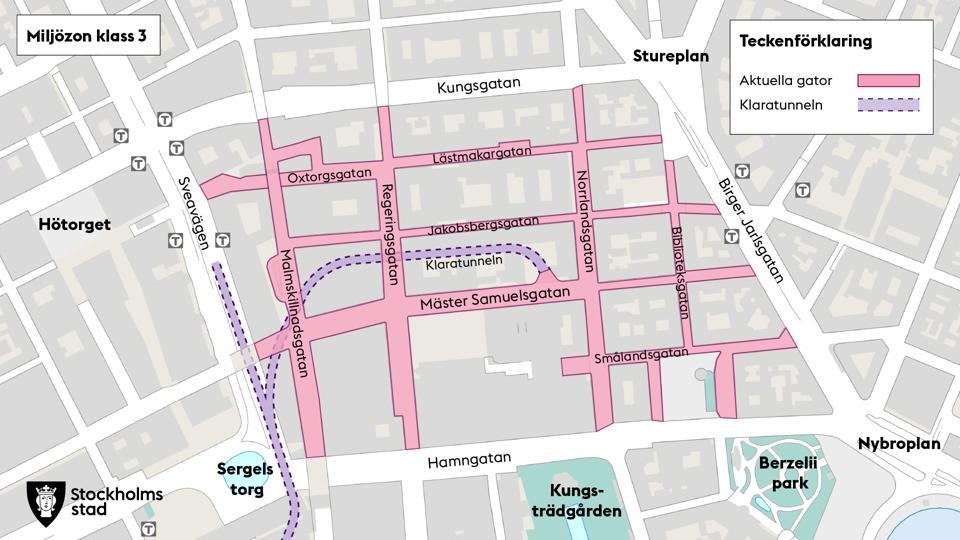- Transport and streets
- Traffic Safety and Rules
- Clean Air Zones
- Clean Air Zone Class 3
Clean Air Zone Class 3
The City of Stockholm is planning to introduce a class 3 clean air zone in an area of the inner city of Stockholm bounded by Kungsgatan, Birger Jarlsgatan, Hamngatan and Sveavägen.
County Administrative Board revokes class 3 clean air zone
On May 26, the County Administrative Board revoked the City of Stockholm's decision to introduce a class 3 clean air zone in an area in the city.
The city is analyzing the decision, further information will be published on this website.
The rules for which vehicles are permitted to circulate in a class 3 clean air zone are regulated in the traffic ordinance and apply throughout Sweden. The City of Stockholm cannot adjust them.
What restrictions apply in a class 3 clean air zone?
A class 3 clean air zone imposes the strictest demands on the vehicles that are permitted to circulate in the designated zone.
The following applies for cars:
- Fully electric vehicles are permitted.
- CNG (gas) vehicles with a Euro 6 emission standard are permitted.
- Fuel cell electric vehicles are permitted.
- Plug-in hybrids are prohibited
For light trucks and light buses, the following applies:
- Fully electric vehicles are permitted.
- CNG (gas) vehicles with a Euro 6 emission standard are permitted.
- Fuel cell electric vehicles are permitted.
- Plug-in hybrids are prohibited.
For heavy trucks and heavy buses, the following applies:
- Fully electric vehicles are permitted.
- CNG (gas) vehicles with a Euro 6 emission standard are permitted.
- Fuel cell electric vehicles are permitted.
- Plug-in hybrids with a Euro 6 emission standard are permitted.

